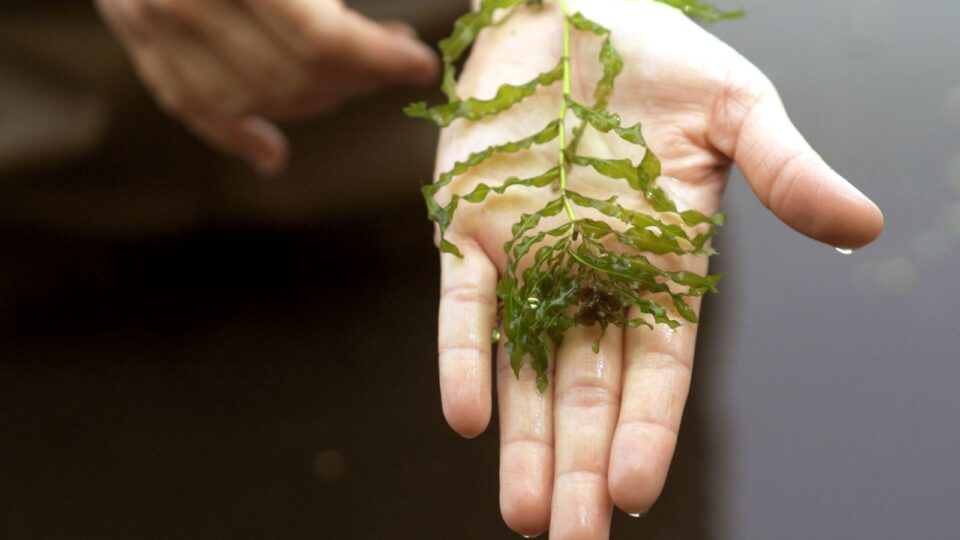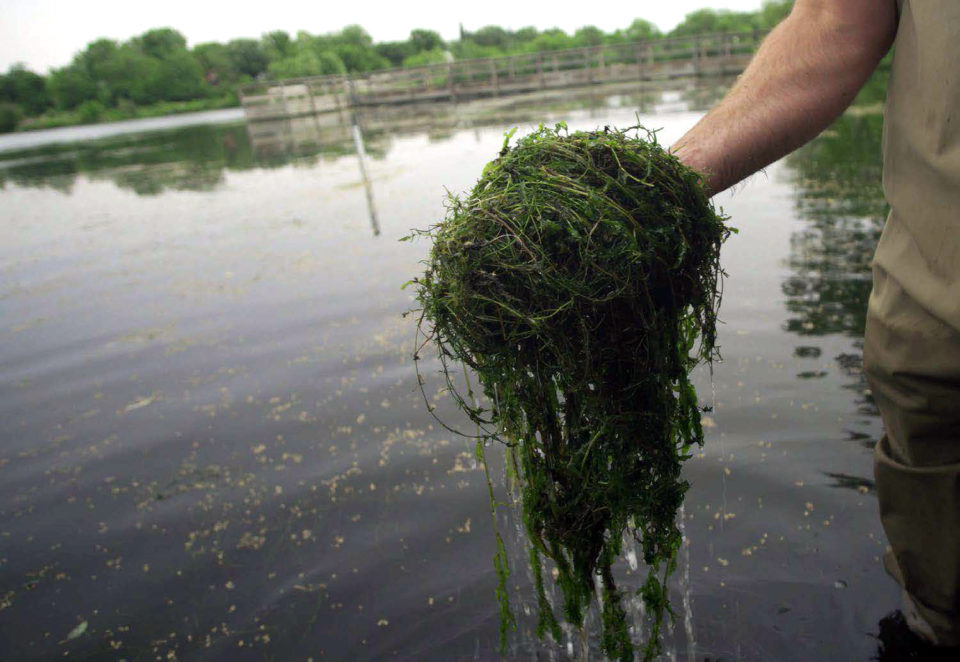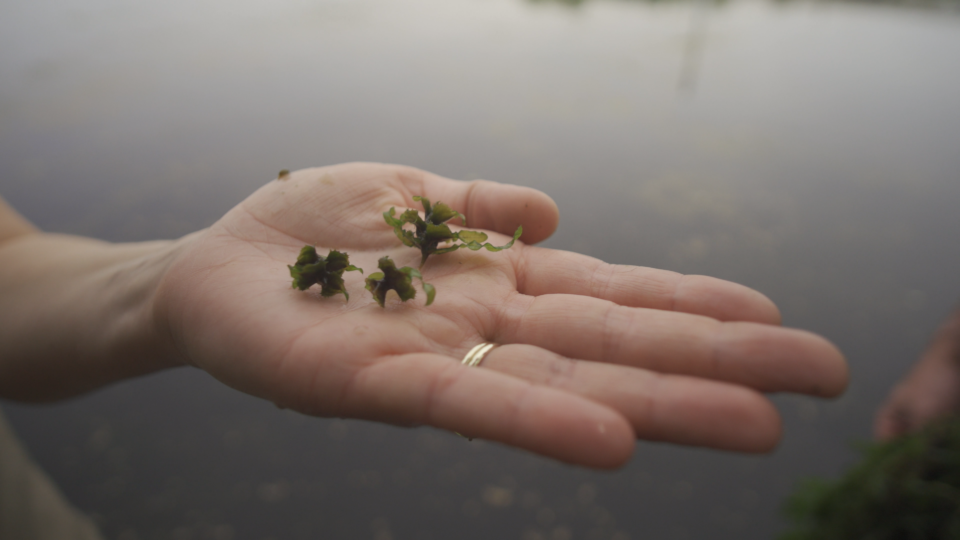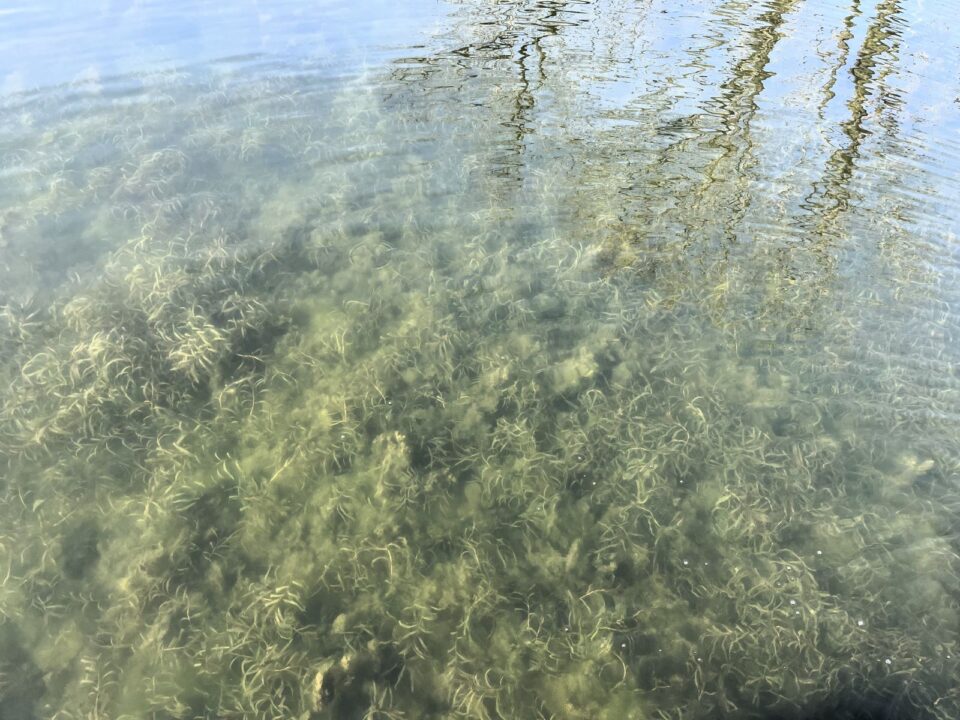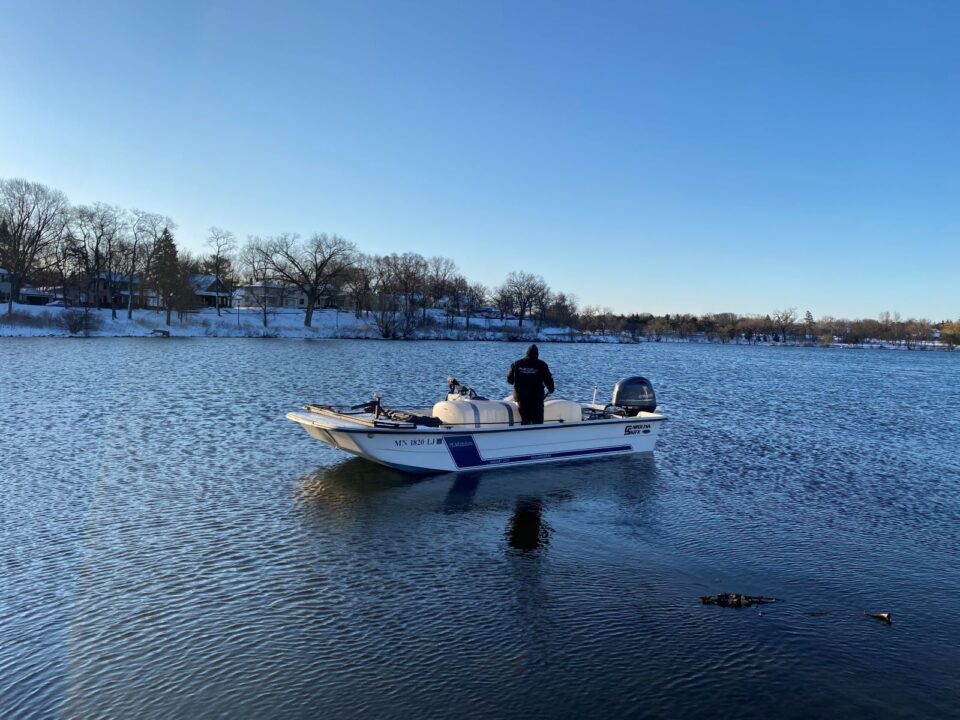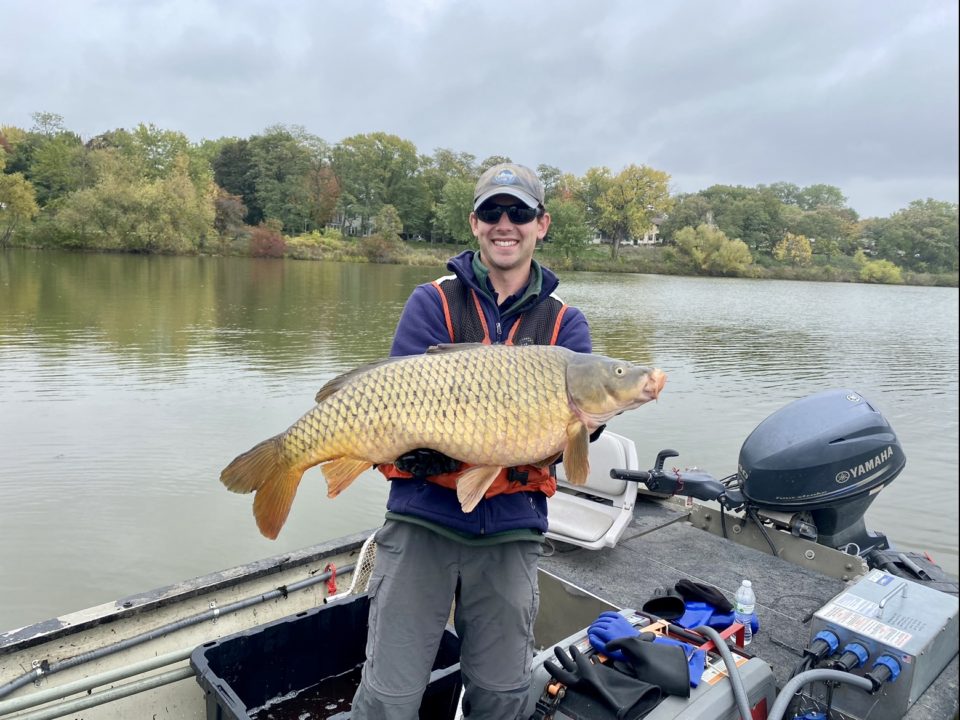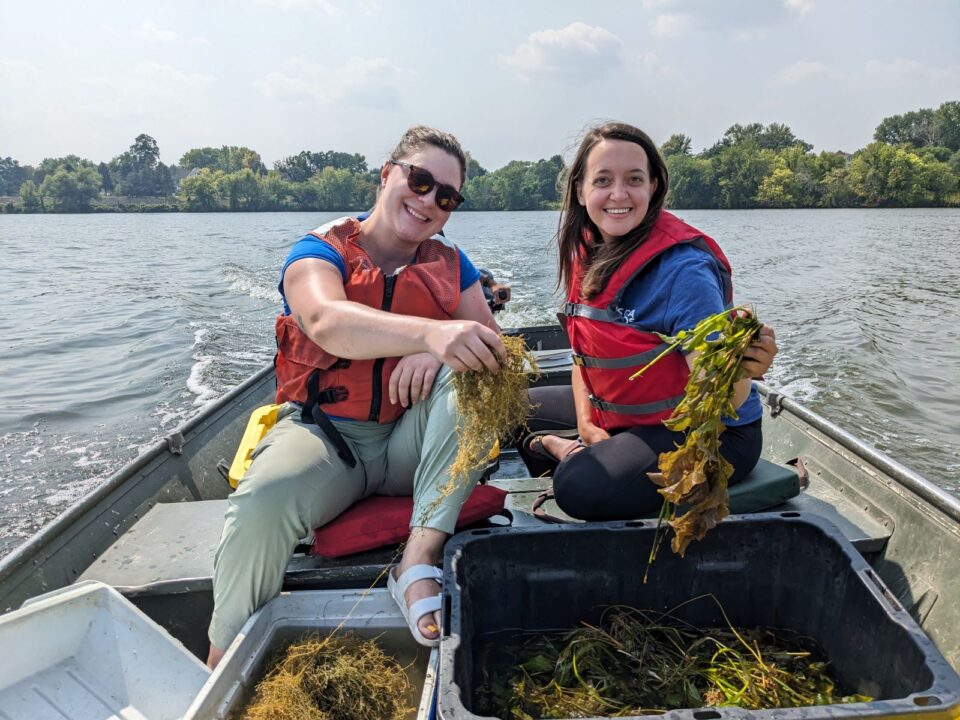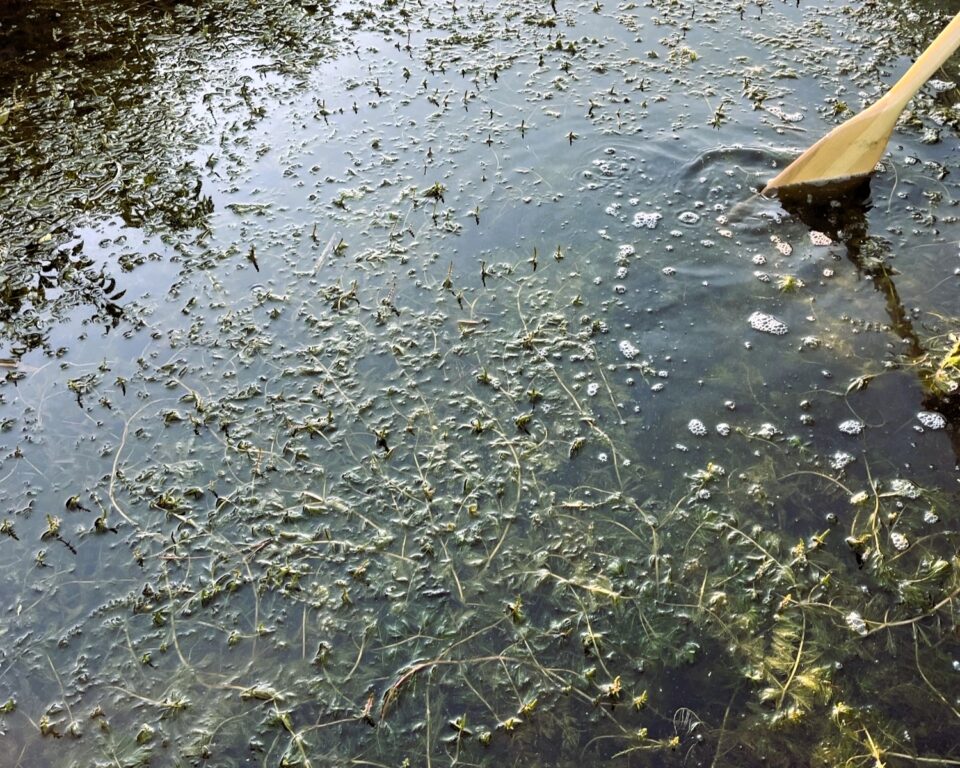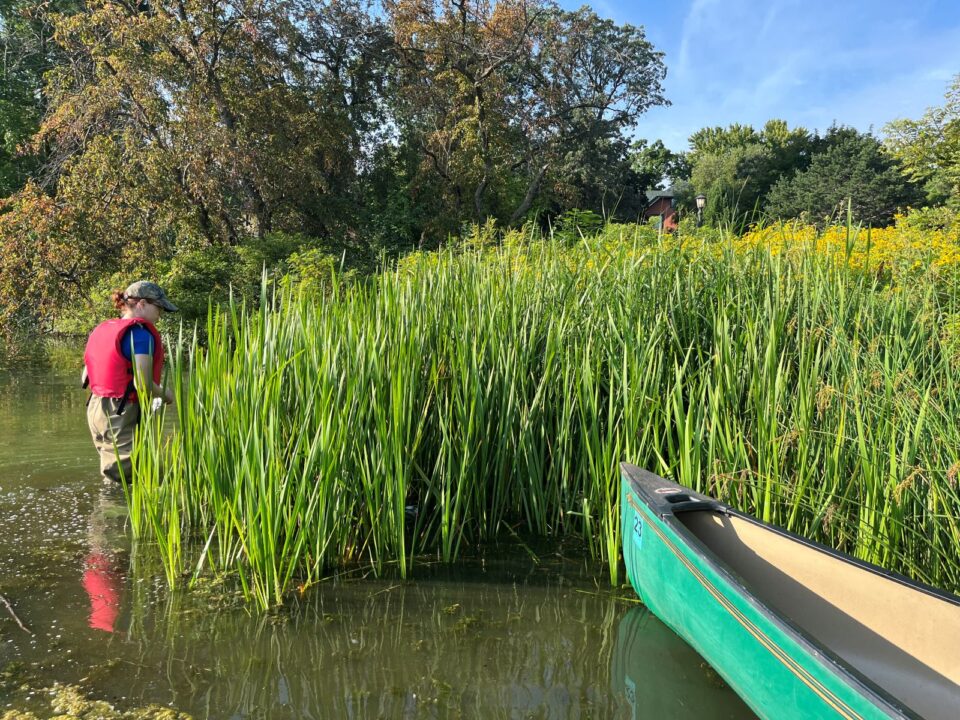In 2019, CRWD, with guidance and support from the City of Saint Paul, Ramsey County, and the Minnesota Department of Natural Resources, outlined the Como Lake Management Plan. By implementing the industry’s best practices, science, and technology, the Como Lake Management Plan identifies strategies to address water quality and ecosystem health issues, including those caused by the presence of invasive curly-leaf pondweed.
To begin addressing the curly-leaf pondweed problem and to support other ongoing water quality improvement projects, CRWD implemented two whole-lake herbicide treatments in Como Lake in April 2020 and March 2021. Following these treatments, plant surveys showed that curly-leaf pondweed decreased by 96% from pre-treatment levels—a major success in managing this aggressive invasive. However, once curly-leaf pondweed is in a lake system, it will never fully go away and needs to be regularly managed to keep the population under control. It is especially important to treat curly-leaf pondweed early in the season so they do not produce turions and prevent future spread.
Native aquatic plants are critical to Como Lake’s water quality and ecosystem health and provide food and shelter for wildlife such as ducks, turtles, fish, and bugs. To enhance and support the native aquatic plant community in Como Lake following the herbicide treatments, CRWD, with assistance from Ramsey County Soil and Water Division and the Minnesota Department of Natural Resources, has been successfully reestablishing the native plant community by transplanting live plants in Como Lake since 2021.
To support further establishment and growth of native aquatic plants CRWD has been working to reduce carp populations in Como Lake through netting and electrofishing since 2022. Through these efforts, carp populations are now below the critical threshold for water quality and the negative impacts from carp in Como Lake have decreased. CRWD will continue to work on the removal of common carp in Como Lake since they uproot plants and severely disturb the upper layer of the lake bottom when feeding. Even small populations of carp in the lake can impact water quality and clarity along with disrupting the native plant community. By reducing carp populations in Como Lake, we are working to ensure that conditions in the lake continue to improve.


